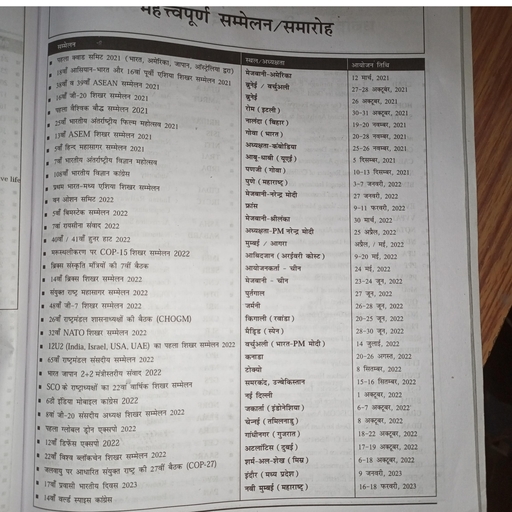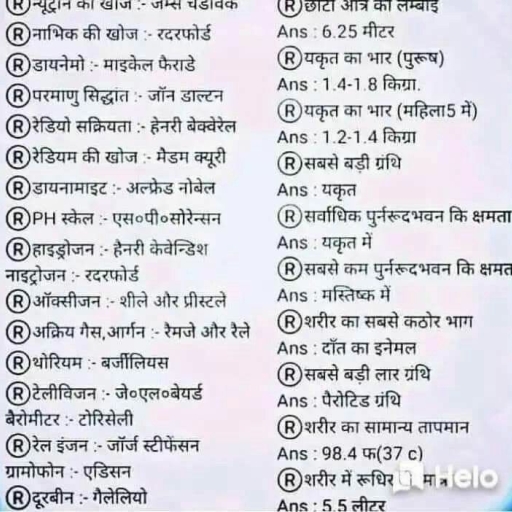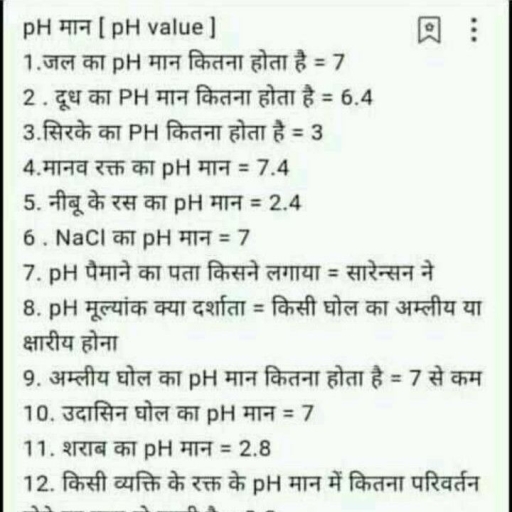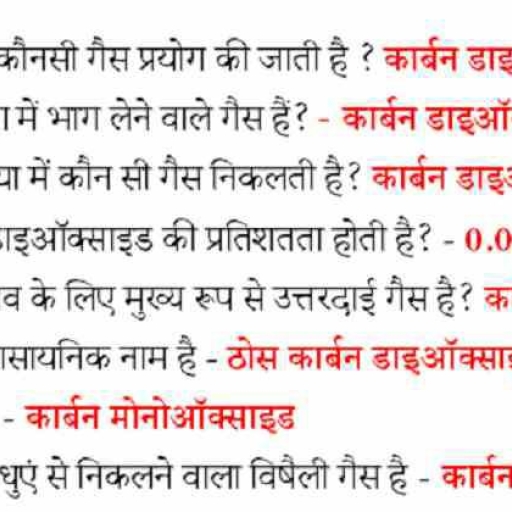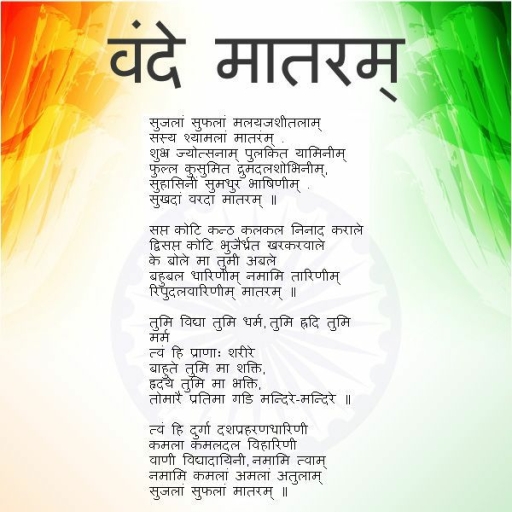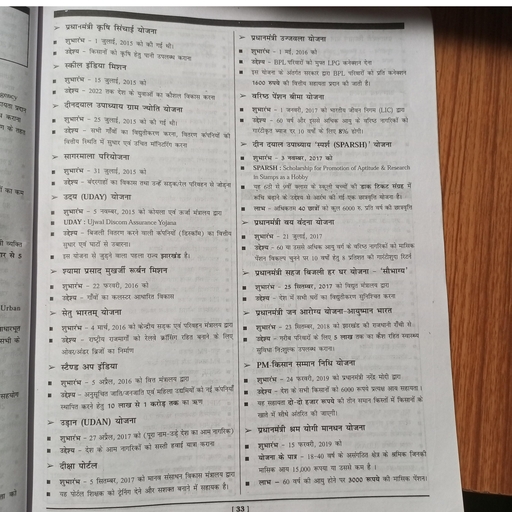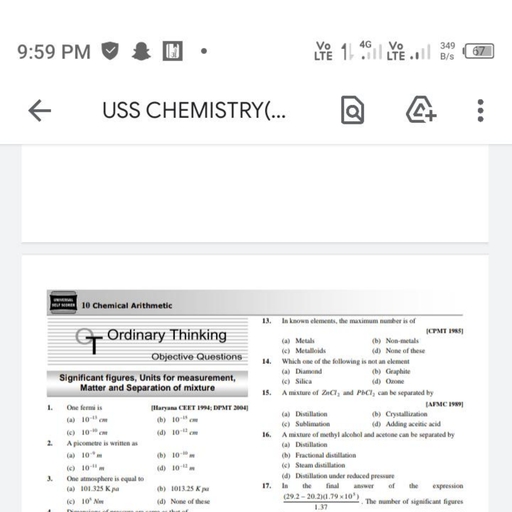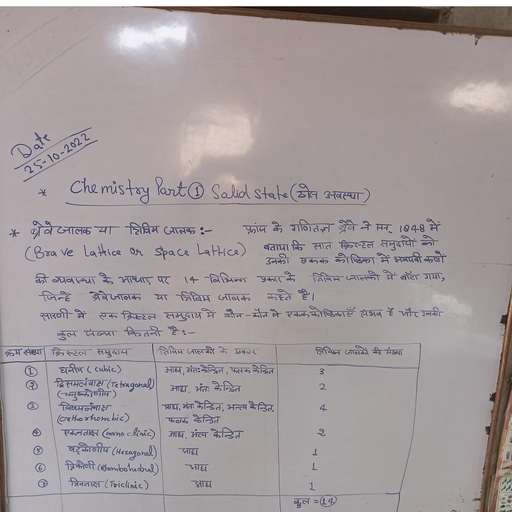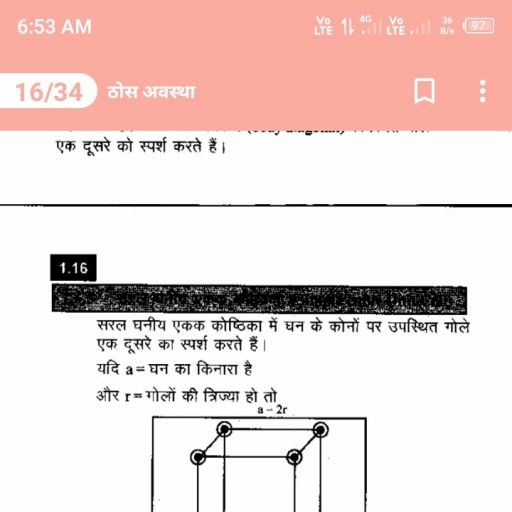Question 3 :
The resistance of a semiconductor material(germanium or silicon) ________with risein temperature.
Question 4 :
In a meter bridge, a standard resistor of R ohm is connected in the left gap and two wires A and B are connected one after the other in the right gap. The balancing length measured from the left is 50 cm for either of them. If the two wires are connected is series and put in the right gap, the balancing length measured from the left would be (in cm)<br/>
Question 7 :
A parallel plate capacitor is charged and then disconnected from the source of potential difference. If the plates of the condenser are then moved farther apart by the use of an insulated handle, which one of the following is true?<br/>
Question 8 :
A piece of silver and another of silicon, both are heated from room temperature. The resistance of<br/>
Question 9 :
If the balancing length for a cell of emf E is 60 cm, the value of E will be
Question 12 :
In a battery, Electrons flow through an electric circuit from the _____ to the _____.<br/>
Question 13 :
When n number identical cell of emf E and internal resistanceis connected in parallel, the net emf of the system will be <br>
Question 14 :
Why is the Wheatstone bridge better than the other methods of measuring resistances?
Question 16 :
The smallest resistance that can be obtained by the combination of  $n$ resistors, each of resistance  $R$ is:
Question 17 :
In a potentiometer arrangement, a cell of emf $1.5V$ gives a balance point at $27cm$ length of wire. If the cell is replaced by another cell and balance point shifts to $54cm$, the emf of the second cell is
Question 19 :
Temperature coefficient of resistance '$\alpha $' and resistivity $\rho $ of a potentiometer wire must be:<br/>
Question 20 :
Amount of electric energy consumed in a circuit per unit time is.
Question 22 :
A $10\ m$ long potentiometer wire is connected to a battery having a steady voltage. A Leclanche cell is balanced at $4\ m$ length of the wire. If the length is kept the same, but its cross-section is doubled, the null point will be obtained at:
Question 23 :
Ten identical batteries each of emf 2 V are connected in series to a $8 \Omega$ resistor. If the current in the circuit is 2 A, then the internal resistance of each battery is
Question 24 :
Fill the following vacant spaces . Batteries convert _____ energy into electrical energy to generate _____.<br/>
Question 25 :
Your are given three equal resistances. In how many combinations can they be arranged?
Question 26 :
A bulb uses 5000J of energy in 10s, calculate its power.
Question 27 :
Assertion (A) : Meterbridge wire is made up of manganin.<br/>Reason (R) :  The temperature coeffiecient of resistance is very small for manganin.<br/><br/>
Question 28 :
On which one of the following the emf of a cell does not depend : 
Question 30 :
A 24V potential difference is applied across a parallel combination of four 6 ohm resistor. The current in each resistor is:<br/>
Question 31 :
What is called the rate of doing work in anelectric circuit?
Question 32 :
If the length of potentiometer wire is increased, then the length of the previously obtained balance point will
Question 33 :
A man has five resistors each of value $\frac {1}{5}\Omega $. What is the maximum resistance he can obtain by connecting them? 
Question 34 :
Rate at which electric work is done is called as ?<br/>
Question 35 :
Series aidingis a term sometimes used to describe voltage sources of the same polarity in series.
Question 36 :
What is the maximum resistance one can make with ten $1 \Omega$ resistors?
Question 38 :
The current in a circuit with an external resistance of $3.75\Omega$ is $0.5\ A$. When a resistance of $1\Omega$ is introduced into the circuit, the current becomes $0.4\ A$. The emf of the power source is
Question 40 :
A dynamo develops $0.5 A$ at $6 V$. The energy which is generated in one second is
Question 41 :
There are three resistance $5\Omega\, ,\, 6\Omega$ and $8\Omega$connected inparallel to a battery of 15 V and of negligible resistance. The potential drop across $6\Omega$ resistance is
Question 42 :
Assertion(A) : The e.m.f of the cell in secondary circuit must be less than e.m.f of cell in primary circuit in potentiometer.<br/>Reason (R): Balancing length cannot be more than length of potentiometer wire.<br/>
Question 43 :
$\displaystyle P=\frac { { V }^{ 2 } }{ R }$ is applied when
Question 44 :
The sensitivity of a potentiometer can be increased by<br/>a) increasing the series resistance in the primary circuit<br/>b) decreasing the length of the potentiometer wire<br/>c) using a thin and high resistivity wire as a potentiometer wire<br/>d) increasing the length of the wire<br/>
Question 45 :
What is the series equivalent of 1000 $\Omega$ resistor and 2700 $\Omega$  resistor in series?<br/>
Question 46 :
Electrical power P is given by expression : $V\times x$. What is $x$?
Question 48 :
If a wire is stretched , so that its length is 20% more than its initial length, the percentage increase in the resistance of the wire is
Question 49 :
A 4$\Omega $ (or 4 ohm) wire and a 2 $\Omega $ (or 2 ohm)wire areconnected in parallel. A current of 3A passes through the wires. How much current passesthrough the 2 $\Omega $ (or 2 ohm) wire?
Question 52 :
There is a fixed potential difference between the two ends of a potentiometer. Two cells are connected in series in such a way that in one arrangement they help each other where as in the second arrangement they oppose each other. The balance point for these two combinations is obtained at 120 cm and 60 cm length respectively. The ratio of the emf of the cell is:
Question 53 :
An electron is moving in a circle of radius $5.1\times 10^{-11}\ m$ at a frequency of $6.8\times 10^{15}$ revolution/second.The equivalent current is approximately.
Question 54 :
Assertion: Ohm's law is not valid if current depends on voltage non-linearly.
Reason: Ohm's law is a fundamental law of nature.
Question 55 :
A current $I$ flows through a uniform wire of diameter $d$ when the mean electron drift velocity is $v$. The same current will flow through a wire of diameter $\dfrac{d}{2}$ made of the same material if the mean drift velocity of the electron is
Question 56 :
The resistors of resistances $2\Omega, 4\Omega, 5\Omega$ are connected in parallel. The total resistance of the combination will be:
Question 57 :
In a potentiometer wire experiment, the emf of a battery in the primary circuit is $20V$ and its internal resistance is $5\space\Omega$. There is a resistance box in series with the battery and the potentiometer wire, whose resistance can be varied from $120\space\Omega$ to $170\space\Omega$. Resistance of the potentiometer wire is $75\space\Omega$. The following potential differences can be measured using this potentiometer
Question 58 :
The drift velocity of an electron is doubled if the applied electric field across the conductor is .....
Question 59 :
The pd a cross terminals of a cell is found to be $29$ volt and $28$ volt respectively when it delivers a current of $1$ ampere and $2$ ampere respectively. The emf and internal resistance of a cell are respectively<br/>
Question 60 :
When there is an electric current through a conducting wire along its length then an electric field must exist
Question 61 :
A given resistor has the following colour code of the various strips on it :Brown, black, green and silver. The value of its resistance in ohm is
Question 62 :
Which of the following statements are wrong w.r.t the specific resistance of wire?
Question 63 :
<br>The length of a wire of a potentiometer is 100 cm, and the e.m.f. of its stand and cell is $\mathrm{E}$ volt. lt is employed to measure the e.m.f. of a battery whose internal resistance is 0.5 $\Omega$. lf the balance point is obtained at $l=30$ cm from the positive end, the e.m.f. of the battery is<br>
Question 64 :
$N$ identical cells, whether joined together in series or in parallel, give the same current, when connected to an external resistance of $R$. The internal resistance of each cell is
Question 65 :
Point out the right statements about the validity of Kirchhoff's junction rule.
Question 66 :
The current in a simple series circuit is $5.0$A. When an additional resistance of $2.0\Omega$ is inserted, the current drops to $4.0$A. The original resistance of the circuit in ohms was.<br>
Question 67 :
The minimum resistance that can be obtainedby connecting 5 resistance of $\displaystyle \frac{1}{4} \Omega$ each is
Question 69 :
The potentiometer wire $10\ m$ long and $20\ ohm$ resistance is connected to a $3\ volt$ emf battery and a $10\ ohm$ resistance. The value of potential gradient in $volt/m$ of the wire will be
Question 70 :
Anexternal resistance R is connected to a cell ofinternal resistance r. The largest amount ofcurrent flows in the external resistance, when<br>
Question 71 :
Two conductors made of the same material have lengths $L$ and $2L$, but have equal resistances. The two are connected in series in a circuit in which current is flowing Which of the following is/are correct?<br/>
Question 72 :
A bulb having voltage rating $V$ and power rating $W$ is supplied with current from $n$ cells each of $1.5\ Volt$ and internal resistance $r$. The value of $n$ to run lamp at rated power $W$ is
Question 73 :
A uniform wire of resistance $50\Omega$ is cut into 5 equal parts. These parts are now connected in parallel. The equivalent resistance of the combination is<br/>
Question 74 :
Assertion: Total current entering a circuit is equal to leaving the circuit by Kirchhoff's law.
Reason: It is based on conservation of energy.
Question 75 :
Two cells of emf approximately 5V and 10V are to be accurately compared using a potentiometerof length 400cm.
Question 76 :
Assertion: The electric bulbs glows immediately when switch is on.
Reason: The drift velocity of electrons in a metallic wire is very high.
Question 77 :
A straight conductor of uniform cross-section carries a current $I$. Let $S$ be the specific charge of an electron. The momentum of all the free electron per unit length of the conductor due to their drift velocity only, is
Question 78 :
Two cells of internal resistances $r_1$ and $r_2$ and of same emf are connected in series, across a resistor of resistance R. If the terminal potential difference across the cells of internal resistance $r_1$ is zero, then the value of R is?
Question 80 :
Two resistors of resistance 2 $\Omega$ and 4 $\Omega$ when connected to a battery will have<br><br>
Question 81 :
The electric power is supplied through the copper wires from a one city to another city which is 150 km apart. If the terminal voltage and average resistance of per kilometer are 8 volt and 0.5 $\Omega$ respectively then the power loss in a wire is :
Question 82 :
On comparing the emf's $E_1$ and $E_2(E_1 > E_2)$ of two cells by a potentiometer, the balancing lengths come out to be $l_1$ and $l_2$ respectively, then<br>
Question 83 :
You are given a resistance wire of length $50 cm$ and a battery of negligible resistance. In which of the following cases is largest amount of heat generated
Question 84 :
Assertion: If we bend an insulated conducting wire, the resistance of the wire increases.
Reason: The drift velocity of electrons in bent wire decreases.
Question 85 :
When current $i$ is flowing through a conductor, the drift velocity is $v$. If the value of current through the conductor and its area of cross-section is doubled, then new drift velocity will be
Question 86 :
Consider the following statements A and B andidentify the correct answer :<br><br>A : Thermistors can have only negativetemperature coefficients of resistances.<br>B : Thermistors with negative temperaturecoefficients of resistance are used as resistancethermometers, to measure low temperatures ofthe order of 10 K.<br>
Question 87 :
Two equal resistances are connected in the gaps of a meter bridge. If the resistance in the left gap is increased by $10\%$, the balancing point shift :<br><br>
Question 88 :
Assertion : A current flows in a conductor only when there is an electric field within the conductor.<br/>Reason : The drift velocity of electron in presence of electric field decreases.<br/>
Question 89 :
The temperature coefficient of resistance of a wire is $0.00125$ per degree celcius. At $300K$ its resistance is $1$ ohm.The resistance of the wire will be $2$ ohm at following temperature :-<br>
Question 90 :
Twelve cells, each having an e.m.f of  E volt are connected in series and are kept in a closed box. Some of these cells are wrongly connected with positive and negative terminals reversed. This 12 cell battery is connected in series with an ammeter, an external resistance R ohms and a two-cell battery (two cells of the same type used earlier, connected perfectly in series). The current in the circuit when the 12-cell battery and 2-cell battery aid each other is 3A and is 2A when they oppose each other. Then the number of cells in 12-cells battery that are connected wrongly is:<br/>
Question 91 :
$12$ cells each having same emf are connected in series with some cells wrongly connected. The arrangement is connected in series with an ammeter and two cells which are in series. Current is $3\ A$ when cells and battery aid each other and is $2\ A$ when cells and battery oppose each other. The number of cells wrongly connected is
Question 92 :
The length of a wire of a potentiometer is 100 cm, and the emf of its standard cell is $E$ volt. It is employed to measure the emf of a battery whose internal resistance is $0.5\Omega$. If the balance point is obtained at $l=30$ cm from the positive end, the emf of the battery is
Question 94 :
The resistors of resistances $2 \Omega, 4 \Omega, 5 \Omega$ are connected in parallel. The total resistance of the combination will be :
Question 95 :
Assertion: Kirchhoff's junction rule can be applied to a junction of several lines or a point in a line.
Reason: When steady current is flowing, there is no accumulation of charges at any junction or at any point in a line.
Question 97 :
Assertion: A potentiometer of longer length is used for accurate measurement.
Reason: The potential gradient for a potentiometer of longer length with a given source of e.m.f. becomes small.
Question 98 :
In a meter bridge, the balancing length from the left end (standard resistance of one ohm in the right gap) is found to be $20 \ cm$. The value of the unknown resistance is
Question 99 :
When $n$ number identical cell of emf $E$ and internal resistance, $r$ is connected in parallel, the net internal resistance of the system will be  
Question 100 :
A wire of uniform thickness with a resistance of $27\, \Omega$ is cut into three equal pieces and they are joined in parallel. The equivalent resistance of the parallel combination will be :
Question 101 :
A copper wire of $3\ mm^{2}$ cross sectional area carries a current of $5\ ampere$. The magnitude of the drifty velocity for the electrons in the wire, (Assume copper to be monovalent, $M_{Cu} = 63.5\ kg/k\ mol$ and density of copper $= 8920\ kg/m^{3})$.
Question 102 :
An alternating voltage $V=30\ \sin {50t}+40\ \cos {50t}$ is applied to a resistor of resistance $10\ \Omega$. The rms value of current through resistor is:
Question 103 :
A cell of emf $E$ is connected to a resistance ${R}_{1}$ for time $t$ and the amount of heat generated in it is $H$. If the resistance ${R}_{1}$ is replaced by another resistance ${R}_{2}$ and is connected to the cell for the same time $t$, the amount of heat generated in ${R}_{2}$ is $4H$. Then internal resistance of the cell is:
Question 104 :
Had the voltmeter been an ideal one, what would have been its reading?
Question 105 :
The colour code of a carbon resistor is, Brown, Black, Brown and Red. The value of the resistor is?
Question 106 :
A potentiometer wire of length $L$ and a resistance $r$ are connected in series with a battery of e.m.f. $E_0$ and a resistance $r_1$. An unknown e.m.f. $E$ is balanced at a length $l$ of the potentiometer wire. The e.m.f. $E$ will be given by:
Question 107 :
The magnitude of electric field at different points along the length of the rod is given by
Question 108 :
Resistance of 0.2 M solution of an electrolyte is 50 $\Omega $. The specific conductance of the solution of 0.5 M solution of the same electrolyte is 1.4 S $ m^{-1} $ and resistance of the same solution of the electrolyte is 280 $\Omega $. The molar conductivity of 0.5 M solution of the electrolyte is ?<br/>
Question 109 :
A platform resistance thermometer reads 0 C when its resistance is $80\Omega$ and 100C when its resistance is $90\Omega$. Find the temperature at the platinum scale at which the resistance is $86\Omega$
Question 110 :
Two metallic wires $A$ and $B$ of equal dimensions but made of different materials, having resistivities $\rho$ and $2\rho$, temperature coefficients of resistivities $2\alpha$ and $\alpha$ are connected in series. The temperature coefficient of resistance of the composite wire equals:
Question 113 :
The terminals of a $18 V$ battery with an internal resistance of $1.5 \Omega$ are connected to a circular wire of resistance $24 \Omega$ at two points distant at one quarter of the circumference of a circular wire. The current through the bigger arc of the circle will be
Question 114 :
The temperature coefficient of resistance of a wire is $\displaystyle { 0.00125 }/{ ^{ \circ  }{ C } }$. Its resistance is $\displaystyle 1\Omega $ at $300\ K$. Its resistance will be $\displaystyle 2\ \Omega$ at:
Question 115 :
Electric current is due to flow of charge carriers in the conductors. Which of the following is/are correct?<br>
Question 116 :
<p>Copper has one conduction electron per atom. Its density is $8.89{ g }/{ m^3}$ and its atomic mass is 63.54 g/mol. lf a copper wire of diameter 1.0 mm carries a current of 2.0 A. What is the drift speed of the electrons in the wire?</p>
Question 117 :
The equivalent resistance of eight equal resistances in series is $48$ ohms. What would be the equivalent resistance if they are connected in parallel?
Question 118 :
A current of $I$ ampere flows through a resistance $R$ when connected across a cell of emf $E$ and internal resistance $1 \Omega$. When $R$ is increased by $50\%$, the current through the circuit is $0.8 A$. The value of $R$ is :
Question 120 :
A voltmeter and an ammeter are connected in series to an ideal cell of emf E. The voltmeter reading is V and the ammeter reading is l<br>
Question 122 :
STATEMENT-1<br/>In a Meter Bridge experiment, null point for an unknown resistance is measured. Now, the unknown resistance is put inside an enclosure maintained at a higher temperature. The null point can be obtained at the same point as before by decreasing the value of the standard resistance.<br/><br/>STATEMENT-2<br/>Resistance of a metal increases with increase in temperature.<br/>
Question 123 :
In a potentiometer experiment, it is found that no current passes through the galvanometer when the terminals of the cell are connected across $52$cm of the potentiometer wire. If the cell is shunted by a resistance of $5\Omega$, a balance is found when the cell is connected across $40$cm of the wire. Find the internal resistance of the cell.
Question 124 :
An ionization chamber with parallel conducting plates as anode and cathode, has $5\times 10^{7}$electrons and the same number of singly charged positive ions per $cm^{3}$. The electrons are moving towards the anode with velocity $0.4\ m/s$. Thecurrent density from anode to cathode is $4\mu A/m^{2}$. The velocity of positive ions moving towards cathode is
Question 125 :
In a Wheatstone bridge, three resistances P, Q and R are connected in the three arms and the fourth arm is formed by two resistances $S_1$ and $S_2$ connected in parallel. The condition for the bridge to be balanced will be
Question 126 :
The resistivity of a potentiometer wire is $\rho$ and the area of cross section of the wire is $A$. If the current flowing in the circuit is $I$, then potential gradient will be
Question 127 :
A constant potential difference is applied between the ends of the wire. If the length of the wire is elongated $4$ times, then the drift velocity of electrons will be:<br/>
Question 128 :
If an alternate current main supply is given to be $220 \ V$. What would be the average electro motive force during a positive half cycle:
Question 129 :
Two parallel straight conductors carrying currents 5A each repel other with a force of $25 \times 10^{-5} Nm^{-1}$. The distance between the conductors is
Question 130 :
A battery is delivering same power to resistance $R_1$ and $R_2$ . Then find the internal resistance of battery :<br>
Question 131 :
Two resistance at $0^{\circ}C$ with temperature coefficient of resistance $\alpha_{1}$ and $\alpha_{2}$ joined in series act as a single resistance in a circuit. The temperature coefficient of their single resistance will be
Question 133 :
<p>A potentiometer wire has length $4$m and resistance $8\Omega$.What should be the resistance that must be connected in series with the wire and an accumulator of emf $2$V, so as to get a potential gradient $1$mV per cm on the wire?</p>
Question 134 :
A cell of emf $E$ and internal resistance $r$ is connected in series with an external resistance $nr$. Then, the ratio fo the terminal potential difference to E.M.F is
Question 135 :
The supply voltage to a room is 120 $V$. The resistance of the lead wires is 6 $\Omega$. A $60W , 120V$ bulb is already switched on. What is the decrease of voltage (in Volts )across the bulb, when a $240 W , 120 V $heater is switched on in parallel to the bulb?<br>
Question 136 :
Find the electric field in the copper wire of area of cross section $2\ mm^2$ carrying a current of $1\ A.$ The resistivity of copper is $1.7\times 10^{-8}\Omega m$.<br>
Question 137 :
<br/>A cell of constant emf first connect to a resistance $R_1$ and then to connected to the resistance $R_2.$ If power delivered in both cases in the same then internal resistance of the cell
Question 138 :
The temperature co-efficient of resistance of a wire is $0.0012/^{\circ}C$. Its resistance is $1\Omega$ at $300\ K$. At what temperature, its resistance will be $2\Omega$?
Question 139 :
A copper tube is of internal radius 4 mm and outer radius 5 mm. Its resistance is R$_{1}$. The tube is filled with a suitable copper wire. The resistance of the arrangement is R$_{2}$.Then R$_{2}$/R$_{1}$ is<br>
Question 140 :
A current of $16 \ A$ is made to pass through a conductor in which the number density of free electrons is $\displaystyle 4\times { 10 }^{ 28 }{ m }^{ -3 }$ and its area of cross section is $\displaystyle { 10 }^{ -5 }{ m }^{ 2 }$. The average drift velocity of free electrons in the conductor is:
Question 141 :
When terminals of a cell of emf 1.5 V are connected to ammeter of resistance $4\Omega$, the ammeter reads 0.30A. Which of the following statements are correct?<br>
Question 142 :
A material $B$ has twice the specific resistance of $A$. A circular wire made of $B$ has twice the diameter of a wire made of $A$. Then for the two wires to have the same resistance, the ratio $l_{B} $ / $l_{A}$ of their respective lengths must be:
Question 144 :
The resistivity of the conductors is of the order of _______.
Question 145 :
Three conductors draw currents of 1 A, 2 A and 4 A respectively, when connected independently across an ideal battery. If they are connected in series across the same battery, then the current drawn will be:<br/>
Question 146 :
Drift velocity varies with the intensity of electric field as per the relation
Question 147 :
A 50 V d.c power supply is used to charge a battery of eight lead accumulators, each of emf 2 V and internal resistance $1/8 \Omega$. The charging current also runs a motor connected in series with the battery. The resistance of the motor is $5 \Omega$ and the steady current supply is 4 A. The chemical power stored in the battery is
Question 148 :
A cell of constant $emf$ first connected of a resistance $R_{1}$ and then connected to a resistance $R_{2}$. If power delivered in both cases is same then the internal resistance of the cell is:
Question 149 :
You are given $5   m$ length of heating wire, it has resistance of $24   \Omega$. It is cut into two and connected to $110$ volt line individually. The total power for the two half lengths is:
Question 150 :
Two unknown resistances are connected in two gaps of a meter-bridge. The null point is obtained at $40\ cm$ from left end. A $30\Omega$ resistance is connected in series with the smaller of the two resistances, the null point shifts by $20\ cm$ to the right end. The value of smaller resistance in $\Omega$ is









